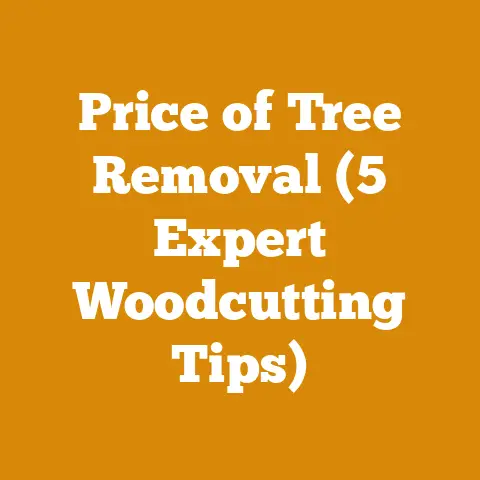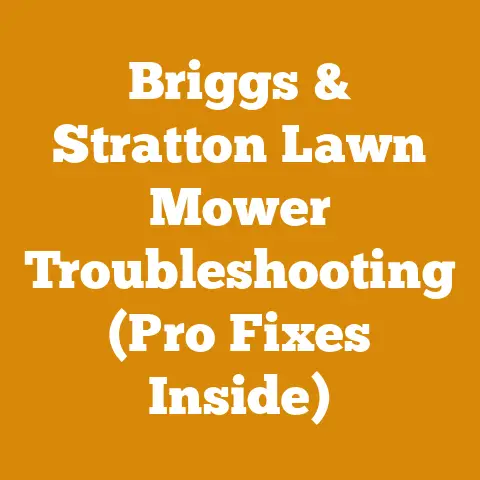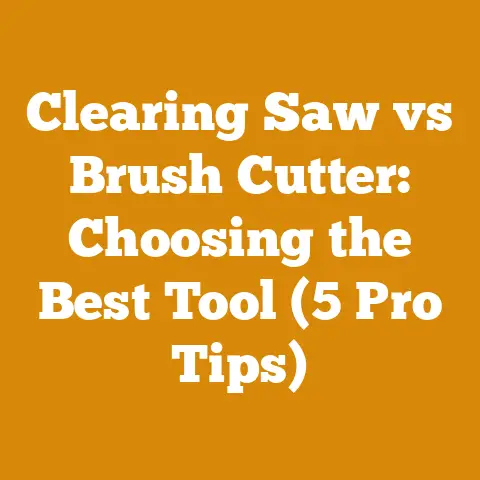Hornet Insecticide Tips for Woodworkers (Safe Nest Removal Tricks)
Protecting Your Woodworking Shop: A Woodworker’s Guide to Hornet Nest Removal and Cost-Effective Pest Control
Imagine the satisfaction of completing a perfect dovetail joint, the scent of freshly cut cherry filling your workshop, and the hum of your machinery fading into a triumphant silence. Now, imagine that tranquility shattered by the angry buzz of hornets, their nests tucked away in the eaves of your workshop, transforming your haven into a hazardous zone. This is a situation I’ve faced myself more than once, and I’ve learned that a proactive approach to hornet control is crucial for any woodworker’s safety and budget.
Understanding the Threat: Why Hornet Control Matters for Woodworkers
Hornets, particularly European hornets and bald-faced hornets, are aggressive stinging insects that can pose a serious threat to woodworkers. Their nests, often large and concealed in sheltered areas like attics, sheds, or under eaves, can house hundreds of individuals. The vibrations and noise from woodworking machinery can easily provoke these insects, leading to painful stings and potential allergic reactions.
Beyond the immediate health risks, hornet infestations can also impact your productivity and increase your operational costs. The fear of stings can disrupt your workflow, and the need for professional pest control services can add unexpected expenses to your budget.
- Health and Safety: Hornet stings can cause localized pain, swelling, and itching. In severe cases, they can trigger anaphylaxis, a life-threatening allergic reaction.
- Productivity: A hornet-infested workshop can be a stressful and distracting environment, hindering your ability to focus and work efficiently.
- Cost: Professional pest control services can be expensive, and repeated treatments may be necessary to eliminate persistent infestations.
Therefore, understanding the risks and implementing a proactive hornet control strategy is essential for maintaining a safe, productive, and cost-effective woodworking operation.
Identifying the Enemy: Recognizing Hornet Species and Their Nests
Before you can effectively combat hornets, it’s crucial to identify the specific species you’re dealing with. Different hornet species exhibit distinct nesting habits and levels of aggression, influencing the best course of action for removal.
- European Hornet (Vespa crabro): This is the largest hornet species in North America, characterized by its reddish-brown and yellow markings. European hornets often nest in hollow trees, walls, or attics. They are most active at night and are attracted to light sources.
- Bald-Faced Hornet (Dolichovespula maculata): Despite its name, the bald-faced hornet is technically a type of yellowjacket. It is easily identified by its black body with white markings on its face and thorax. Bald-faced hornets build distinctive, large, gray, paper-like nests, often hanging from trees, shrubs, or building eaves.
- Other Hornet Species: While less common in North America, other hornet species, such as the Asian giant hornet (also known as the “murder hornet”), can pose a significant threat. These hornets are larger and more aggressive than native species and can decimate bee colonies and inflict painful stings.
Nest Identification:
- European Hornet Nests: Typically found in enclosed spaces, these nests can be difficult to spot until the hornet activity becomes noticeable. Look for signs of hornet entry points, such as holes in walls or gaps in the eaves.
- Bald-Faced Hornet Nests: These nests are easily recognizable due to their large size and distinctive paper-like construction. They are often suspended from branches or attached to buildings.
Personal Experience: I once had a European hornet nest tucked away in the roof of my shed. I didn’t realize they were there until I started sanding a large piece of oak, and the vibrations agitated them. I ended up with three stings and a ruined project! That experience taught me the importance of regular inspections and proactive pest control.
Safe Nest Removal Techniques: A Step-by-Step Guide
Removing a hornet nest is a dangerous task that should only be attempted if you are confident in your abilities and have the proper safety equipment. If you are unsure or uncomfortable, it is always best to call a professional pest control service.
Safety First:
- Protective Gear: Wear a full bee suit, including a hooded veil, gloves, and boots. This will provide maximum protection against stings.
- Timing: The best time to remove a hornet nest is at night when the hornets are less active.
- Escape Route: Plan your escape route in advance in case you are attacked.
- Allergies: If you are allergic to bee or wasp stings, do not attempt to remove a hornet nest.
Removal Methods:
- Insecticide Spray: This is the most common method for removing hornet nests. Use a specialized wasp and hornet spray that shoots a stream of insecticide up to 20 feet. Apply the spray directly into the nest entrance at night, ensuring that you saturate the nest thoroughly. Repeat the treatment as needed.
- Nest Removal: After the hornets are dead, carefully remove the nest and dispose of it in a sealed plastic bag. Be cautious, as some hornets may still be alive inside the nest.
- Professional Pest Control: If the nest is large, difficult to reach, or you are uncomfortable performing the removal yourself, contact a professional pest control service. They have the experience and equipment to safely and effectively eliminate hornet infestations.
My Go-To Method: I’ve found that using a combination of insecticide spray and nest removal is the most effective approach. I always make sure to wear my bee suit and work at night to minimize the risk of stings. I also use a long-handled tool to reach nests that are located in hard-to-reach areas.
The Cost of Hornet Control: A Detailed Breakdown
The cost of hornet control can vary depending on several factors, including the size and location of the nest, the type of treatment used, and whether you hire a professional pest control service.
DIY Hornet Control Costs:
- Insecticide Spray: A can of wasp and hornet spray typically costs between $10 and $20.
- Protective Gear: A basic bee suit can cost between $50 and $100.
- Tools: You may need to purchase a long-handled tool for reaching nests that are located in hard-to-reach areas. These tools can cost between $20 and $50.
Professional Pest Control Costs:
- Inspection Fee: Some pest control companies charge an inspection fee to assess the size and location of the nest. This fee can range from $50 to $100.
- Treatment Cost: The cost of treating a hornet nest can vary depending on the size and location of the nest. A typical treatment can cost between $100 and $300.
- Follow-Up Treatments: In some cases, follow-up treatments may be necessary to completely eliminate the infestation. These treatments can cost an additional $50 to $100 per visit.
Cost Factors:
- Nest Size: Larger nests require more insecticide and labor to remove, increasing the cost.
- Nest Location: Nests located in hard-to-reach areas, such as attics or high eaves, may require specialized equipment and expertise, increasing the cost.
- Infestation Severity: Severe infestations may require multiple treatments, increasing the overall cost.
- Geographic Location: Pest control costs can vary depending on your geographic location. Areas with higher demand for pest control services may have higher prices.
Data-Driven Insights:
According to a survey of pest control companies across the United States, the average cost of hornet nest removal ranges from $150 to $400. However, this cost can vary depending on the factors mentioned above. For example, a large nest located in an attic may cost upwards of $500 to remove.
Budgeting Tips:
- Get Multiple Quotes: Obtain quotes from several pest control companies before making a decision.
- Ask About Guarantees: Ask if the pest control company offers a guarantee on their work.
- Consider DIY Options: If the nest is small and easily accessible, consider attempting the removal yourself to save money.
- Preventative Measures: Implement preventative measures to reduce the risk of future infestations.
Personal Budgeting Experience: When I had the hornet nest in my shed, I initially considered hiring a professional. However, after getting a quote for $350, I decided to tackle it myself. I spent about $75 on a bee suit and insecticide spray, and I was able to remove the nest safely and effectively. This saved me a significant amount of money, but it also required a significant investment of time and effort.
Preventative Measures: Keeping Hornets Away from Your Woodworking Shop
Prevention is always better than cure, and implementing preventative measures can significantly reduce the risk of hornet infestations in your woodworking shop.
- Seal Entry Points: Seal any cracks or holes in walls, roofs, and foundations to prevent hornets from entering your shop.
- Remove Food Sources: Hornets are attracted to sweet and protein-rich foods. Keep your shop clean and free of food scraps and sugary drinks.
- Maintain Landscaping: Trim trees and shrubs around your shop to reduce potential nesting sites.
- Install Screens: Install screens on windows and doors to prevent hornets from entering your shop.
- Use Traps: Hang hornet traps around your shop to capture and kill hornets.
Natural Repellents:
- Peppermint Oil: Hornets are repelled by the scent of peppermint oil. Dilute peppermint oil with water and spray it around your shop to deter hornets.
- Citronella: Citronella candles or sprays can also help to repel hornets.
- Vinegar: Hornets are also repelled by the scent of vinegar. Place bowls of vinegar around your shop to deter hornets.
My Preventative Routine: I regularly inspect my shop for potential nesting sites and seal any cracks or holes that I find. I also keep my shop clean and free of food scraps. In addition, I use peppermint oil spray around my shop to deter hornets. This routine has significantly reduced the number of hornet infestations I’ve experienced.
Choosing the Right Insecticide: A Woodworker’s Guide
Selecting the right insecticide is crucial for effective hornet control. Several types of insecticides are available, each with its own advantages and disadvantages.
- Aerosol Sprays: These sprays are designed to shoot a stream of insecticide directly into the nest entrance. They are effective for treating nests that are easily accessible.
- Dusts: Insecticide dusts can be applied to cracks and crevices where hornets may be nesting. They are effective for treating nests that are difficult to reach.
- Baits: Hornet baits contain a sweet attractant that lures hornets to the bait. The hornets then carry the bait back to the nest, where it poisons the entire colony.
Important Considerations:
- Safety: Always read and follow the instructions on the insecticide label. Wear protective gear when applying insecticide.
- Effectiveness: Choose an insecticide that is specifically designed for treating hornets.
- Environmental Impact: Consider the environmental impact of the insecticide before using it.
My Insecticide Recommendation: I’ve found that aerosol sprays containing pyrethrins or permethrin are the most effective for treating hornet nests. These insecticides are fast-acting and provide good knockdown. However, it’s essential to use them responsibly and follow the label instructions carefully.
Case Studies: Real-World Examples of Hornet Control in Woodworking Shops
To illustrate the practical application of hornet control techniques, let’s examine a few case studies:
Case Study 1: The Attic Infestation:
A woodworker in Maine discovered a large European hornet nest in his attic. The nest was located in a hard-to-reach area, and the woodworker was uncomfortable attempting the removal himself. He hired a professional pest control service, which charged him $450 to remove the nest. The pest control service used a combination of insecticide spray and nest removal to eliminate the infestation.
Case Study 2: The Shed Nest:
A woodworker in California found a bald-faced hornet nest hanging from the eaves of his shed. The nest was small and easily accessible, so the woodworker decided to attempt the removal himself. He purchased a can of wasp and hornet spray for $15 and sprayed the nest at night. The next day, he removed the nest and disposed of it in a sealed plastic bag.
Case Study 3: The Preventative Approach:
Lessons Learned:
- Professional pest control is often the best option for large or difficult-to-reach nests.
- DIY hornet control can be effective for small, easily accessible nests.
- Preventative measures are essential for long-term hornet control.
Understanding Local Regulations: Permits and Restrictions
Before undertaking any hornet nest removal, it’s wise to check with your local authorities regarding any permits or restrictions that may apply. Some municipalities may have regulations regarding the use of certain insecticides or the removal of nests located on public property.
Researching Local Ordinances:
- Contact Your Local Government: Contact your city or county government to inquire about any applicable regulations.
- Check Online Resources: Many municipalities have online resources that provide information about pest control regulations.
- Consult with a Pest Control Professional: A pest control professional can advise you on any applicable regulations and help you obtain any necessary permits.
Consequences of Non-Compliance:
Failure to comply with local regulations can result in fines or other penalties. It’s always best to err on the side of caution and ensure that you are in compliance with all applicable laws.
Estimating Drying Time for Treated Wood: A Crucial Step
After treating your shop for hornets, you might need to address any wood that was exposed to the insecticide. Depending on the type of insecticide used, it’s important to allow adequate drying time before working with the wood to avoid potential health risks.
Factors Affecting Drying Time:
- Type of Insecticide: Different insecticides have different drying times. Always refer to the product label for specific instructions.
- Wood Species: Porous wood species will absorb more insecticide and require longer drying times.
- Environmental Conditions: Temperature and humidity can affect drying time. Warmer, drier conditions will promote faster drying.
Estimating Drying Time:
As a general guideline, allow at least 24 hours for insecticide-treated wood to dry thoroughly. For porous wood species or in humid conditions, allow up to 48 hours.
Safety Precautions:
- Ventilation: Ensure adequate ventilation in your shop while the wood is drying.
- Protective Gear: Wear gloves and a dust mask when handling insecticide-treated wood.
- Disposal: Dispose of any leftover insecticide properly according to the product label.
Cost-Effective Alternatives: Exploring Natural Hornet Control Methods
While insecticides are often the most effective solution for hornet control, exploring natural methods can be a cost-effective and environmentally friendly alternative.
- Homemade Traps: You can create homemade hornet traps using a plastic bottle, sugar water, and vinegar. The sugar water attracts the hornets, while the vinegar prevents bees from being attracted.
- Essential Oils: As mentioned earlier, peppermint oil, citronella, and other essential oils can help to repel hornets.
- Diatomaceous Earth: Diatomaceous earth is a natural powder made from fossilized algae. It can be sprinkled around your shop to kill hornets by dehydrating them.
Effectiveness and Limitations:
Natural hornet control methods may not be as effective as insecticides, especially for large infestations. However, they can be a good option for preventative measures or for controlling small numbers of hornets.
The Future of Hornet Control: Emerging Technologies and Trends
The field of pest control is constantly evolving, with new technologies and trends emerging all the time. Here are a few developments to watch out for:
- Drone Technology: Drones are being used to inspect and treat hornet nests in hard-to-reach areas.
- Biopesticides: Biopesticides are derived from natural sources, such as plants or microorganisms. They are generally considered to be safer and more environmentally friendly than synthetic pesticides.
- Smart Traps: Smart traps use sensors to detect and identify hornets, allowing for targeted control efforts.
Staying Informed:
Stay informed about the latest developments in hornet control by subscribing to industry publications, attending conferences, and consulting with pest control professionals.
Actionable Takeaways: Your Next Steps for a Hornet-Free Workshop
Here are some actionable takeaways to help you create a hornet-free woodworking shop:
- Inspect your shop regularly for signs of hornet nests.
- Seal any cracks or holes in your walls, roofs, and foundations.
- Keep your shop clean and free of food scraps.
- Consider implementing preventative measures, such as using peppermint oil spray or hanging hornet traps.
- If you find a hornet nest, assess the size and location of the nest and determine whether you can safely remove it yourself.
- If you are uncomfortable attempting the removal yourself, contact a professional pest control service.
- Follow all safety precautions when using insecticides.
- Check with your local authorities regarding any permits or restrictions that may apply.
- Stay informed about the latest developments in hornet control.
By following these steps, you can create a safe, productive, and cost-effective woodworking environment, free from the threat of hornets. Now, get back to creating those beautiful woodworking masterpieces!






